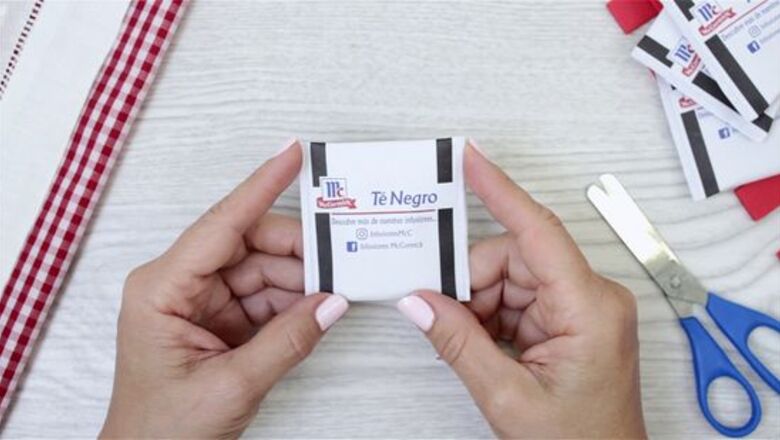
views
Steeping the Tea
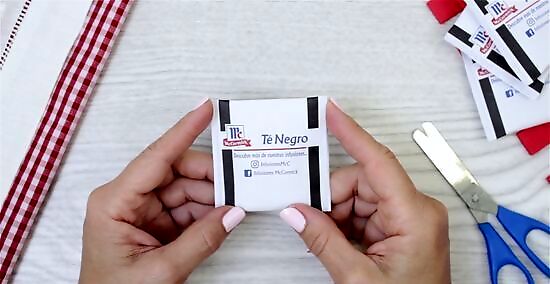
Remove the tea bags from their packaging and cut off the strings. The number of bags you’ll use depends on the size of the fabric and how dark you want it to be. To prepare the tea, unwrap the tea bags and discard the packaging. Use a pair of scissors to remove the strings, and throw those away as well. How many tea bags should you use? In most cases, use 2 tea bags for every cup or 237 milliliters (8 fl oz) of water that you’re using. Add extra bags if you want your fabric to be a darker color. You need to use enough water to cover the fabric, so the more water that you use, the more tea bags you’ll need. Tea works as a natural dye because it’s rich in tannins, which are molecules that bond well to natural fibers. Because of the tannins, you don’t need a mordant (a substance used to bind dye to fabric). Black tea works best for dyeing fabric because it has the deepest color. Teas that are light in color, such as white or green teas, don't work as well. You can also use loose tea to dye your fabric if you prefer. However, the process is less messy if you use tea bags instead.
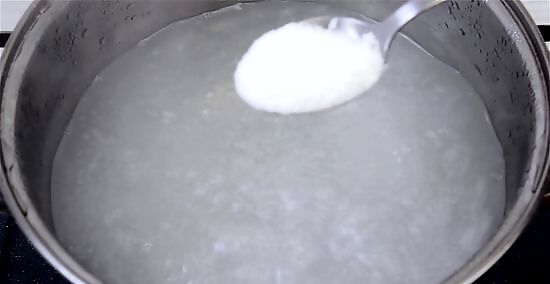
Boil a large pot of water with salt in it. Fill a large pot with enough water to cover your fabric and allow it to move freely. Mix in some table salt and place the pot on the stove. Turn the heat to high, and bring the water to a full boil. How much water should you use? In general, use 4 cups or 1 liter (0.26 US gal) of water for every yard or meter of fabric that you’re dyeing. How much salt should you use? Use 2 tablespoons (34.14 g) of salt for every 4 cups or 1 liter (0.26 US gal) of water. Adding salt to the water will help set the color in the fabric so it won’t come out as easily when you wash the items.
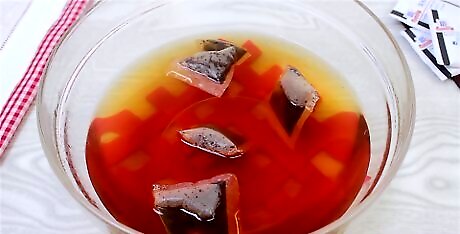
Steep the tea for at least 15 minutes. Once the water comes to a boil, remove the pot from the heat and place the tea bags inside. Let the bags soak in the water until the color comes out of the tea. The longer that you allow the tea to soak, the more color will come out and the darker your dyed fabric will be. Keep checking on the water to see if you’re happy with the color before you add the fabric.
Dyeing the Fabric
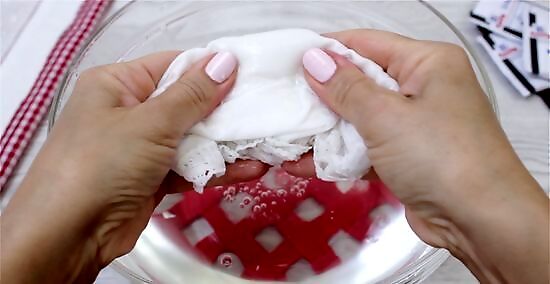
Wash or wet the fabric and wring it out. The fabric that you’re dyeing should be wet when you dye it. Wash pre-used fabric to remove any stains or dirt, or if you’re using new fabric, rinse it in water before dyeing. Wring out the excess water before you begin the dyeing process. Tea dyeing will only work on natural fibers, such as cotton, silk, linen, and wool. It won't work on synthetic fabric, such as polyester. While you should wring out the fabric before dyeing it, don’t allow it to dry completely.
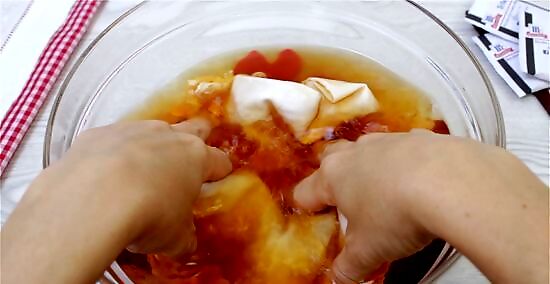
Remove the tea bags from your pot of water and add the fabric. When your tea has reached the desired color, carefully remove all of the tea bags from the water and discard them. Place the wet fabric in the tea water and make sure that it’s completely submerged. Swirl the fabric around with a wooden spoon or other stirring instrument to ensure that it rests at the bottom of the pot and is completely under the water. Some areas of the fabric may start popping up in the water. Use spoons or other kitchen tools to hold it down. If you want to dye an important fabric, like an heirloom piece, test the process with a scrap of the same fabric to make sure you like the results.
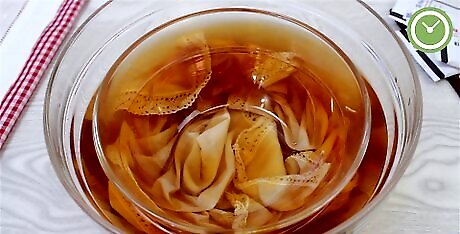
Soak the fabric in the tea for at least an hour. Once all of the fabric is submerged in the tea bath, allow it to soak for at least 60 minutes to fully absorb the color. Keep in mind that the longer that you leave the fabric in the tea, the darker it will be dyed. To create a very deep color, try soaking it in the tea overnight. Gently stir or agitate the fabric in the tea bath every so often while it’s soaking. That will help ensure that it dyes evenly. Lift the fabric out of the tea at regular intervals to see how dark it has become. However, be aware that the fabric will dry lighter than it appears when wet, so you may need to continue soaking it longer than you think.
Rinsing and Drying the Fabric
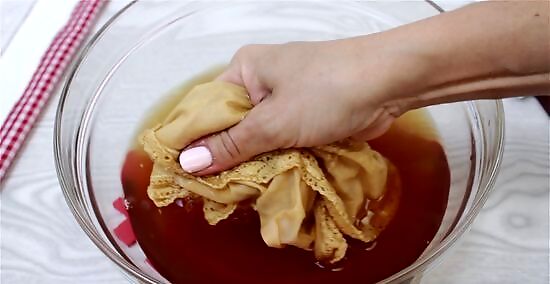
Rinse and soak the fabric in cold water and vinegar. Once you’re happy with the fabric’s color, remove it from the tea bath. Give it a quick rinse in cold water then soak it for 10 minutes in a pot of cold water. Add a splash of vinegar to the water to help set the color. If you’re bothered by the tea scent of the fabric, remove the smell by handwashing it with laundry detergent meant for delicate items. Laundry tip: When washing the fabric after it’s been dyed, avoid using regular laundry detergents that can remove tea stains. Instead, try using lemon and vinegar or a natural fabric soap.
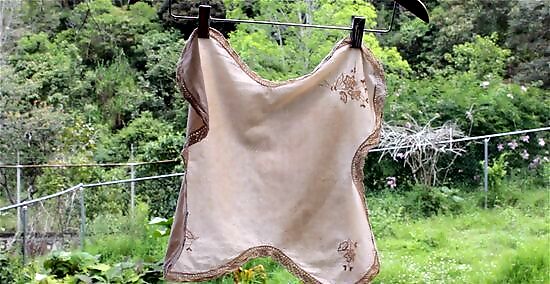
Wring out the excess water and air dry the fabric. After the fabric has soaked in the cold water and vinegar mixture, remove it from the pot and wring out the excess water. Lay the fabric out flat in a warm, sunny spot, and allow it to dry completely. Depending on the type of fabric that you’re dyeing, you may want to throw the fabric in the dryer instead of air drying it.
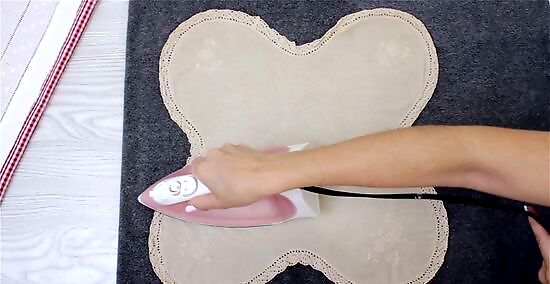
Iron the fabric. Many fabrics wrinkle easily when placed in the pot to dye, and because you’re laying it flat to dry, the wrinkles won’t be removed during the drying process. Iron the fabric to smooth it and give it a more attractive appearance. Take the fabric type into account before ironing. While durable fabrics such as cotton and linen hold up well to heat, delicate materials like silk need to be ironed more gently. Heavy wool requires the steam setting. Consult the instruction manual for your iron to determine the best setting for your fabric.

















Comments
0 comment